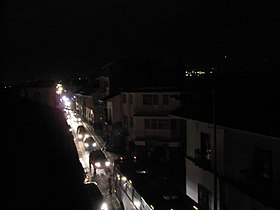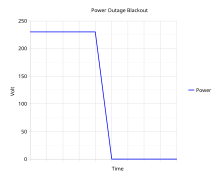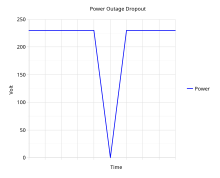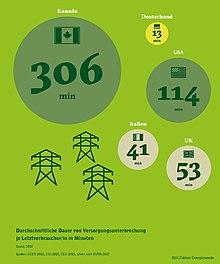
Electric power transmission is the bulk movement of electrical energy from a generating site, such as a power plant, to an electrical substation. The interconnected lines that facilitate this movement form a transmission network. This is distinct from the local wiring between high-voltage substations and customers, which is typically referred to as electric power distribution. The combined transmission and distribution network is part of electricity delivery, known as the electrical grid.

The electric power industry covers the generation, transmission, distribution and sale of electric power to the general public and industry. The commercial distribution of electric power started in 1882 when electricity was produced for electric lighting. In the 1880s and 1890s, growing economic and safety concerns lead to the regulation of the industry. What was once an expensive novelty limited to the most densely populated areas, reliable and economical electric power has become an essential aspect for normal operation of all elements of developed economies.

A cascading failure is a failure in a system of interconnected parts in which the failure of one or few parts leads to the failure of other parts, growing progressively as a result of positive feedback. This can occur when a single part fails, increasing the probability that other portions of the system fail. Such a failure may happen in many types of systems, including power transmission, computer networking, finance, transportation systems, organisms, the human body, and ecosystems.

The National Grid is the high-voltage electric power transmission network serving Great Britain, connecting power stations and major substations, and ensuring that electricity generated anywhere on the grid can be used to satisfy demand elsewhere. The network serves the majority of Great Britain and some of the surrounding islands. It does not cover Northern Ireland, which is part of the Irish single electricity market.

A rolling blackout, also referred to as rota or rotational load shedding, rota disconnection, feeder rotation, or a rotating outage, is an intentionally engineered electrical power shutdown in which electricity delivery is stopped for non-overlapping periods of time over different parts of the distribution region. Rolling blackouts are a last-resort measure used by an electric utility company to avoid a total blackout of the power system.
Electric power quality is the degree to which the voltage, frequency, and waveform of a power supply system conform to established specifications. Good power quality can be defined as a steady supply voltage that stays within the prescribed range, steady AC frequency close to the rated value, and smooth voltage curve waveform. In general, it is useful to consider power quality as the compatibility between what comes out of an electric outlet and the load that is plugged into it. The term is used to describe electric power that drives an electrical load and the load's ability to function properly. Without the proper power, an electrical device may malfunction, fail prematurely or not operate at all. There are many ways in which electric power can be of poor quality, and many more causes of such poor quality power.
The 2003 Italy blackout was a serious power outage that affected all of the Italian Peninsula for 12 hours and part of Switzerland near Geneva for 3 hours on 28 September 2003. It was the largest blackout in the series of blackouts in 2003, involving about 56 million people.
A microgrid is a local electrical grid with defined electrical boundaries, acting as a single and controllable entity. It is able to operate in grid-connected and in island mode. A 'stand-alone microgrid' or 'isolated microgrid' only operates off-the-grid and cannot be connected to a wider electric power system. Very small microgrids are called nanogrids.

A transmission system operator (TSO) is an entity entrusted with transporting energy in the form of natural gas or electrical power on a national or regional level, using fixed infrastructure. The term is defined by the European Commission. The certification procedure for transmission system operators is listed in Article 10 of the Electricity and Gas Directives of 2009.
Electrical devices are considered grid friendly if they operate in a manner that supports electrical grid reliability through demand response. Basic grid-friendly devices may incorporate features that work to offset short-term undesirable changes in line frequency or voltage; more sophisticated devices may alter their operating profile based on the current market price for electricity, reducing load when prices are at a peak. Grid-friendly devices can include major appliances found in homes, commercial building systems such as HVAC, and many industrial systems.
Advanced Distribution Automation (ADA) is a term coined by the IntelliGrid project in North America to describe the extension of intelligent control over electrical power grid functions to the distribution level and beyond. It is related to distribution automation that can be enabled via the smart grid. The electrical power grid is typically separated logically into transmission systems and distribution systems. Electric power transmission systems typically operate above 110kV, whereas Electricity distribution systems operate at lower voltages. Normally, electric utilities with SCADA systems have extensive control over transmission-level equipment, and increasing control over distribution-level equipment via distribution automation. However, they often are unable to control smaller entities such as Distributed energy resources (DERs), buildings, and homes. It may be advantageous to extend control networks to these systems for a number of reasons:
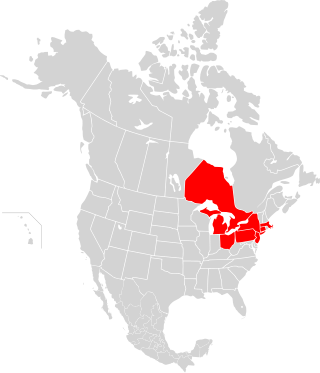
The Northeast blackout of 2003 was a widespread power outage throughout parts of the Northeastern and Midwestern United States, and most parts of the Canadian province of Ontario on Thursday, August 14, 2003, beginning just after 4:10 p.m. EDT.
Islanding is the intentional or unintentional division of an interconnected power grid into individual disconnected regions with their own power generation.
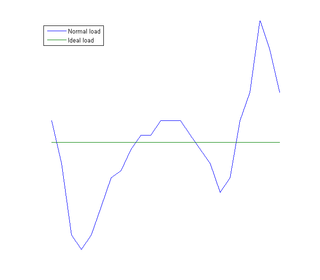
Load management, also known as demand-side management (DSM), is the process of balancing the supply of electricity on the network with the electrical load by adjusting or controlling the load rather than the power station output. This can be achieved by direct intervention of the utility in real time, by the use of frequency sensitive relays triggering the circuit breakers, by time clocks, or by using special tariffs to influence consumer behavior. Load management allows utilities to reduce demand for electricity during peak usage times, which can, in turn, reduce costs by eliminating the need for peaking power plants. In addition, some peaking power plants can take more than an hour to bring on-line which makes load management even more critical should a plant go off-line unexpectedly for example. Load management can also help reduce harmful emissions, since peaking plants or backup generators are often dirtier and less efficient than base load power plants. New load-management technologies are constantly under development — both by private industry and public entities.

The smart grid is an enhancement of the 20th century electrical grid, using two-way communications and distributed so-called intelligent devices. Two-way flows of electricity and information could improve the delivery network. Research is mainly focused on three systems of a smart grid – the infrastructure system, the management system, and the protection system. Electronic power conditioning and control of the production and distribution of electricity are important aspects of the smart grid.

An electrical grid is an interconnected network for electricity delivery from producers to consumers. Electrical grids consist of power stations, electrical substations to step voltage up or down, electric power transmission to carry power over long distances, and finally electric power distribution to customers. In that last step, voltage is stepped down again to the required service voltage. Power stations are typically built close to energy sources and far from densely populated areas. Electrical grids vary in size and can cover whole countries or continents. From small to large there are microgrids, wide area synchronous grids, and super grids.

The 2010 Chile blackout was an electric power outage that affected most of Chile on March 14, 2010. It began at 8:44 pm on Sunday and continued into the next day. The power was restored in a few hours in some areas, and by midnight in most areas, except in the Biobío Region.
A distribution management system (DMS) is a collection of applications designed to monitor and control the electric power distribution networks efficiently and reliably. It acts as a decision support system to assist the control room and field operating personnel with the monitoring and control of the electric distribution system. Improving the reliability and quality of service in terms of reducing power outages, minimizing outage time, maintaining acceptable frequency and voltage levels are the key deliverables of a DMS. Given the complexity of distribution grids, such systems may involve communication and coordination across multiple components. For example, the control of active loads may require a complex chain of communication through different components as described in US patent 11747849B2

The 2011 Southwest blackout, also known as the Great Blackout of 2011, was a widespread power outage that affected the San Diego–Tijuana area, southern Orange County, Imperial Valley, Mexicali Valley, Coachella Valley, and parts of Arizona. It occurred on Thursday, September 8, 2011, beginning at about 3:38pm PDT, and was the largest power failure in California history.
Power resilience refers to a company's ability to adapt to power outages. Frequent outages have forced businesses to take into account the "cost of not having access to power" in addition to the traditional "cost of power". Climate-related issues have intensified the attention on energy sustainability and resilience. In the United States, electric utility firms have registered over 2500 significant power outages since 2002, with almost half of them attributed to weather events, including storms, hurricanes, and other unspecified severe weather occurrences. These incidents often lead to significant economic losses.
